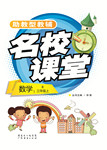閱讀理解
Each year, 1,400 high-school students from more than 40 countries are invited to compete in the prestigious Intel International Science and Engineering Fair(Intel ISEF), the world’s largest precollege science contest.The select group of young scientists is chosen from the several million students who compete in local and regional science fairs throughout the year.Participants compete for $3 million in scholarships and prizes, presenting projects in 15 categories like medicine, biochemistry, computer science and zoology.Earning top honors isn’t the only goal for contestants.Nineteen percent(or 274)of the finalists at the 2005 competition held last month have already begun the process to patent their projects.
Ammem Abdulrasool, a senior at the Illinois Junior Academy of Science, won top honors at this year’s Intel ISEF for his project, “Prototype for Autonomy:Pathway for the Blind.” He walked away with $70,000 in prize money and a free trip to October’s Nobel Prize ceremony.Abdulrasool developed technology that allows visually impaired individuals to navigate themselves from one location to another by using the Global Positioning System.Individuals wear a half-kilo Walkman-size device, a bracelet on each arm and a pair of earphones.After entering a starting and ending location into a personal digital assistant(PDA), they are guided with verbal commands that tell them when and in what direction to turn.Simultaneously, a bracelet vibrates signaling the correct direction.To test his device, Abdulrasool recruited 36 blind adults and asked them to visit five landmarks in his neighborhood.The navigational tool saved people an average of 26 minutes in travel time and reduced the number of errors(wrong turns and missed locations).“Looking at how hard it was for them to travel and how they were dependent on everyone else motivated me to do something,” he said.Abdulrasool hopes are applying for a patent and then plan to market the product commercially.
In the fair’s 56-year history, a number of projects have been implemented for commercial use.Michael Nyberg, a 2001 competitor, hoped to reduce the number of West Nile virus infections through acoustics.With a bucket of mosquito larvae and a sound generator, Nyberg discovered that a 24 kHz frequency resonated with the natural frequency of mosquitoes’ internal organs:larvae that absorbed the acoustic energy would explode.His sound-emitting device, Larvasonic, is now sold online(www.larvasonic.com).Tiffany Clark, a 1999 competitor, found evidence that bacteria produced the methane gas found inside coal seams in Wyoming’s Powder River Basin.This suggested that injecting nutrients into coal seams might provide an unlimited supply of natural gas.A Denver-based technology firm is now continuing Clark’s high-school research.And someday soon, blind people around the world may be wearing bracelets that issue GPS commands.

 名校課堂系列答案
名校課堂系列答案